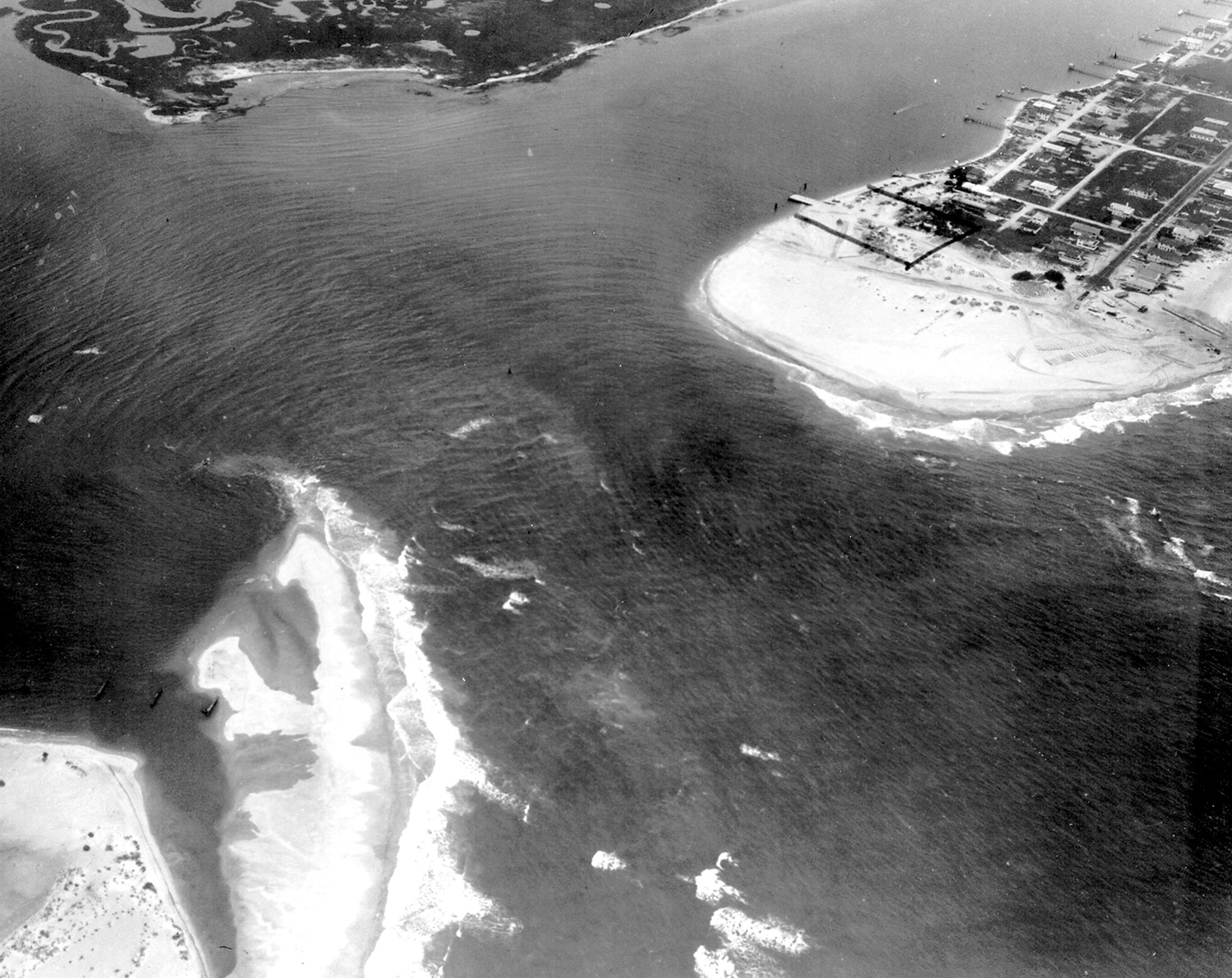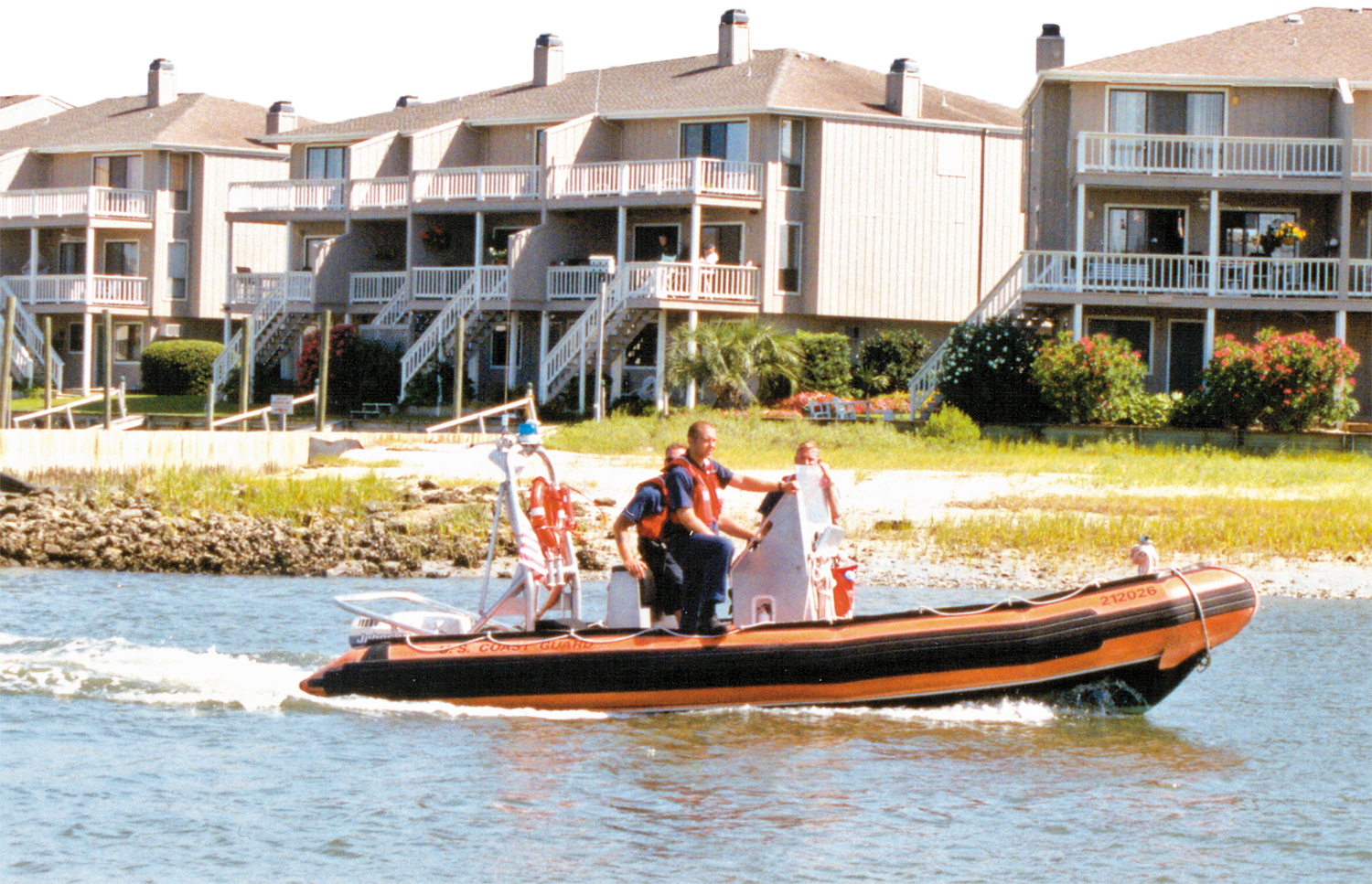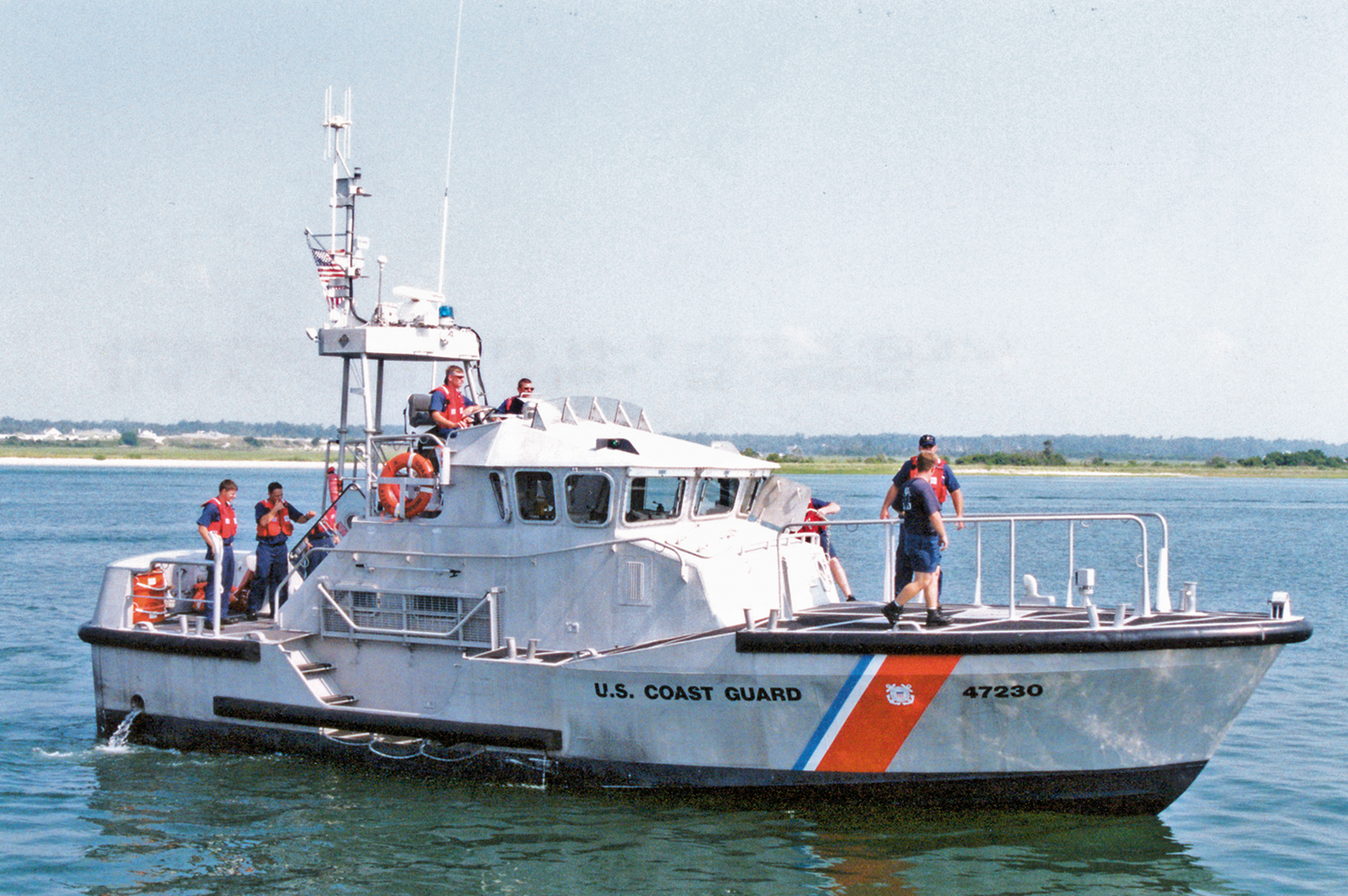Originally published in the August 2001 issue of Wrightsville Beach Magazine.
Since man has gone down to sea in ships, great risks have been taken to save those who were in danger. To improve the chances of success, it was necessary to define the responsibilities and appropriate the means.
In 1831, the U.S. Secretary of the Treasury ran the revenue cutter Gallatin criss-cross the coast in search of people in distress. It was the first time that a government agency had been specifically tasked with tracking down people who might be at risk. In 1837, Congress authorized the President to bring “public ships…to sail the coast, in the hardest part of the season…to render to navigators in distress such aid as their situation and necessities might require; and these public vessels must go to sea fully prepared to render this assistance. »
The United States Coast Guard (USCG) is the nation’s oldest maritime agency. Its history is quite complicated as it is the incorporation of five previous federal agencies, the Revenue Cutter Service, the Lighthouse Service, the Steamboat Inspection Service, the Bureau of Navigation and the Lifesaving Service, which were originally independent but had overlapping powers and were revamped. around the government before being united under the umbrella of the Coast Guard. It is the primary maritime law enforcement agency in the country and has broad and multifaceted jurisdictional authority.
The USCG traces its origins to August 4, 1790, when Congress authorized the President to build and outfit 10 ships to collect revenue and provide a complement of officers and men to operate those ships. This first service was known as the Revenue Marine (later the Revenue Cutter Service) and represented an attempt to address a serious smuggling problem that had a huge financial impact on the nation’s ability to enforce its laws at sea.

At the south end of Wrightsville Beach, just before Masonboro Inlet on the healthy side, is one of the most beautiful peninsulas on the east coast. This two to three acre waterfront gem facing Banks Channel has unparalleled development value, yet is federally owned. Established in August 1969, it houses the Wrightsville Beach Coast Guard Station.
As early as 1958 the government had maintained a Coast Guard lighthouse attendant station, with docks located on the Banks Canal opposite the Old City Hall.
Beneath the old water tower, this modest group of buildings also included the police station, jail, fire station, and city offices. To the north and aft of the water tower was a small barrack-like building that served as a coastguard station.
The Coast Guard was stationed there to operate the Coast Guard Motor Lifeboat. This odd-looking craft was a 36-foot self-righting, self-vacuuming beach rescue vessel and a precursor to today’s heavy-weather boat, and in common use until the late 1900s. 1970.
Next, Milliard Police Chief’s daughter Everette “Stinky” Williams, former WB museum director Jan Brewington, and her friends had a playground on the expanse of grass next to the sound.
In Jan’s memory, these young guards “just hung around all day”, and she fondly describes a little playhouse they built for her on the property in their spare time. She tells a story of how she and a playmate got into a world of trouble “while stealing military green paint to paint their playhouse”. The trail of evidence was obvious; they had used their hands.
The low gray buildings of the current station at the south end of Wrightsville were constructed in 1969 and located on the western portion of the site, which was originally three plots. Several houses on the property were demolished due to high maintenance costs, and parking was added in their place.
The resort’s area of responsibility extends from Frying Pan Shoals, north to Surf City and up to 50 nautical miles, plus ICWW from Surf City to Snows Cut. To respond to calls for help in all weathers, the unit has a strong network of ships ready to intervene immediately.



Wrightsville Beach Station is one of the Coast Guard’s 5th District small boat stations, which is managed and supported from a central office in Portsmouth, Virginia. The boundaries of the 5th Coast Guard District encompass the states of Delaware, Maryland, Virginia, North Carolina, and parts of New Jersey and Pennsylvania.
The district includes 156,000 square miles of ocean, bays, rivers, wetlands and tidal marshes. It is one of the smallest, but busiest districts, protecting the largest natural harbor in the world, the Chesapeake Bay, as well as the Delaware Bay and all their tributaries. A large percentage of US East Coast cargo enters through the eight major ports in the District’s Coastal Zone: Baltimore, MD; City of Morehead, North Carolina; Newport, Va. News; Philadelphia, Pennsylvania; Marcus Hook, PA; Trenton, New Jersey; Wilmington, DE; and Wilmington, North Carolina.
Seven clusters are located in the district, comprising marine safety offices, cutters including buoys, icebreaker tugs, medium endurance cutters, patrol boats and river boats, 33 small boat stations, an array of helicopters, C-130 aircraft, navigational crew aids, two air stations and a communications station.
Although they do not enforce state or local laws, they assist other law enforcement agencies. They will get involved when a boater is acting negligently and enforce the boating laws while intoxicated.

